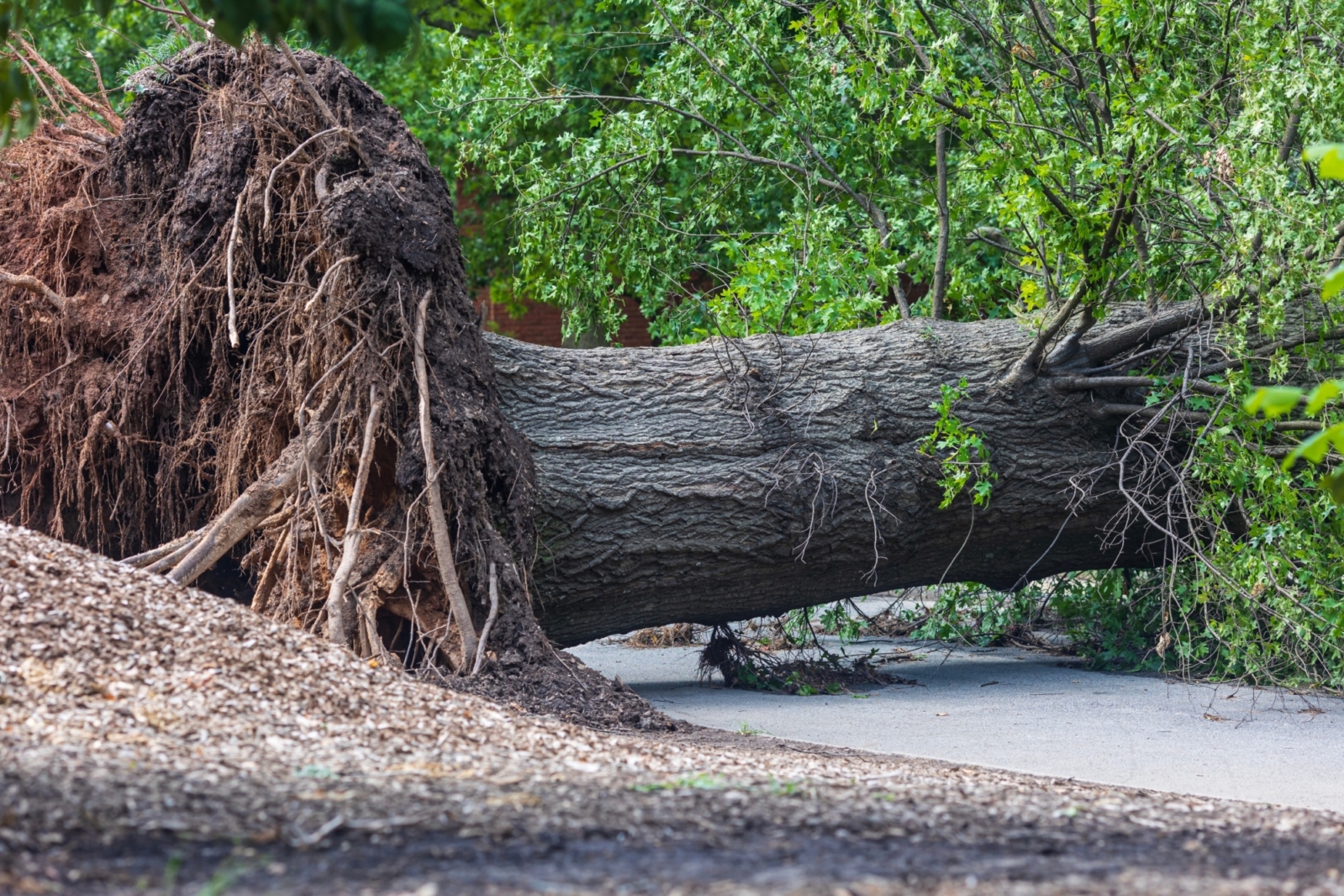Mitigating Wind Damage: Strategies for Protecting Property and Promoting Resilience

Severe storms unleash powerful winds and torrential rains, wreaking havoc on businesses and communities, causing significant damage and disruption. The aftermath of the storm, from uprooted trees to collapsed roofs and flooded streets, can be devastating. Mitigating wind damage is crucial for protecting property and ensuring the safety of occupants.
In this blog, we'll explore the destructive nature of wind damage, its broad impacts on businesses and communities, and effective strategies to minimize its devastation during severe storm events. By understanding the effects of storm damage, and the wind damage dynamics, it makes sense to implement proactive measures. Property owners can strengthen their businesses and communities against nature's destructive forces, fostering resilience and recovery in challenging times.
Understanding Wind Damage:
Before getting into mitigation strategies, it's essential to understand the nature of wind damage. Wind can cause a variety of structural issues, including roof damage, siding damage, broken windows, and even structural collapse. Additionally, flying debris propelled by high winds can exacerbate damage and pose serious safety risks.
Furthermore, the severity of wind damage can vary depending on various factors such as wind speed, direction, and duration of the storm. High winds can exert tremendous pressure on buildings, especially those with weak or aged structures. It's essential to assess your property's vulnerability to wind damage and take appropriate measures to reinforce weak areas. By understanding the dynamics of wind damage, property owners can better prepare and implement effective mitigation strategies to protect their investments and ensure the safety of occupants.
Strategies for Minimizing Losses in Severe Storm Devastation:
Strengthening Roof Structures:
- Reinforcing roof structures is essential for withstanding strong winds. This can be achieved through the use of hurricane straps, metal connectors, and bracing systems.
- Regular roof inspections and maintenance are crucial for identifying and repairing weak spots before they become vulnerable to wind damage.
Securing Windows and Doors:
- Installing impact-resistant windows and doors can help prevent wind-driven debris from shattering glass and breaching the building envelope.
- Adding storm shutters or plywood panels provides an extra layer of protection during severe storms.
Anchoring Outdoor Structures:
- Outdoor structures such as sheds, gazebos, and fences are particularly vulnerable to wind damage. Anchoring these structures securely to the ground can prevent them from being lifted or toppled by strong winds.
- Removing or securing loose items in the yard, such as patio furniture and potted plants, can also help reduce the risk of wind-borne projectiles.
Maintaining Trees and Landscaping:
- Proper tree maintenance, including trimming dead or overhanging branches, can prevent trees from toppling onto structures during storms.
- Choosing wind-resistant landscaping materials and planting trees and shrubs strategically can minimize the risk of wind damage to property.
Strengthening Building Envelopes:
- Ensuring that the building envelope is properly sealed and reinforced can help prevent wind-driven rain from infiltrating the interior of the structure.
- Installing impact-resistant roofing materials and siding can enhance the resilience of the building envelope against wind damage.
Developing an Emergency Preparedness Plan:
- Developing a comprehensive emergency preparedness plan that includes evacuation procedures, shelter-in-place protocols, and communication strategies is essential for minimizing the impact of severe storms.
- Educating residents and employees about the importance of preparedness and practicing drills can help ensure a swift and coordinated response during emergencies.
Mitigating wind damage in severe storm devastation requires a proactive and multi-faceted approach. By strengthening building structures, securing windows and doors, anchoring outdoor structures, maintaining landscaping, and developing emergency preparedness plans, property owners can minimize the risk of wind damage and protect lives and property during severe storms. Investing in wind-resistant building materials and implementing preventive measures can ultimately save lives, reduce property damage, and promote community resilience in the face of natural disasters.
National Disaster Solutions (NDS): Your Business’s Path to Recovery
With the NDS Prime Program, businesses take a proactive stance toward successful recovery amidst emergencies and natural disasters. We understand that downtime translates to lost revenue and customers. That's why we offer a comprehensive solution, covering everything from emergency planning and mitigation to post-loss reconstruction. Our team of experts works tirelessly to minimize disruptions and restore your operations swiftly and efficiently.
But our commitment to your business doesn't stop there. With NDS Prime, you gain access to a priority emergency response service, ensuring that help is just a phone call away. Whether it's storm damage, water damage, fire damage, or any other disaster, our rapid response team is ready to spring into action, 24/7, 365 days a year.
Additionally, our pre-loss planning services help identify vulnerabilities and develop tailored strategies to mitigate risks before disaster strikes. By investing in proactive measures now, you can significantly reduce the impact of future emergencies on your business.
At NDS, we prioritize your business's resilience and recovery. Contact us today for immediate assistance and discover the peace of mind that comes with partnering with National Disaster Solutions. We're here to support you every step of the way, committed to getting your business back on track.

